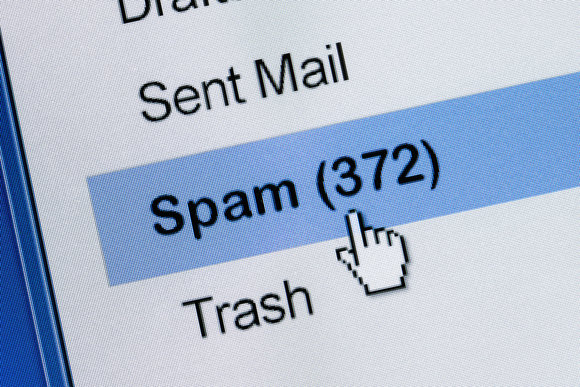Spam Email
Spam Email is often disguised in an attempt to fool any anti-spam software you may have installed. Spammers try to find ways to modify or conceal their messages to achieve this, such as putting spaces between letters or replacing key letters with numbers or characters so that spam filters will not be triggered. While your anti-spam software may not always be able to catch this, you should be able to identify it fairly easily. Spam may be used to bombard you with unsolicited messages, which may include inappropriate or offensive adult content. Spam may also contain malware or be part of a “phishing” scam (see the Online Scams section below).
Instant Messaging (IM) Spam
Instant Messaging spam (IM Spam) is similar to spam email. The main difference is that rather than focusing their efforts on bombarding your email inbox, spammers attempt to fool you on an instant messaging service such as BlackBerry Messenger or Apple’s iMessage. While not as common as spam email, IM spam is more difficult to block out because no particular software exists specifically for spam received while using instant messaging services. A good way to avoid most of it is to create a closed list of friends from whom instant messages are accepted. Even then, it is always possible that a computer belonging to someone within your “safe” list could become infected, so any strange link you receive via IM should be verified before you click on it.
Forum and Comment Spam
Spam is also often found in online forums and discussion boards and in the comments sections of online newspaper and magazine articles Spammers can attack these by posting spam messages as comments. These may be simple ads but can also include links leading to malicious websites.
Mobile Phone Spam
It is possible to receive spam messages through email, text messages or even phone calls on your mobile phone. On top of the usual issues with spam, you may be charged for these unsolicited text messages or pay valuable minutes for the intrusive phone calls.
SPIT (Spam in VoIP Sessions)
SPIT (Spam over Internet telephony), or VoIP
(Voice over Internet Protocol) spam, comes as a phone call using VoIP. While it is not yet very common, the biggest problem surrounding SPIT is that on average, voice messages are 10 times larger than email messages and therefore consume a lot of bandwidth. This could lead to significantly decreased call clarity and quality. The prevalence of SPIT is expected to rise as the same sources that produce large amounts of spam email can easily modify their messages into VoIP spam calls.










